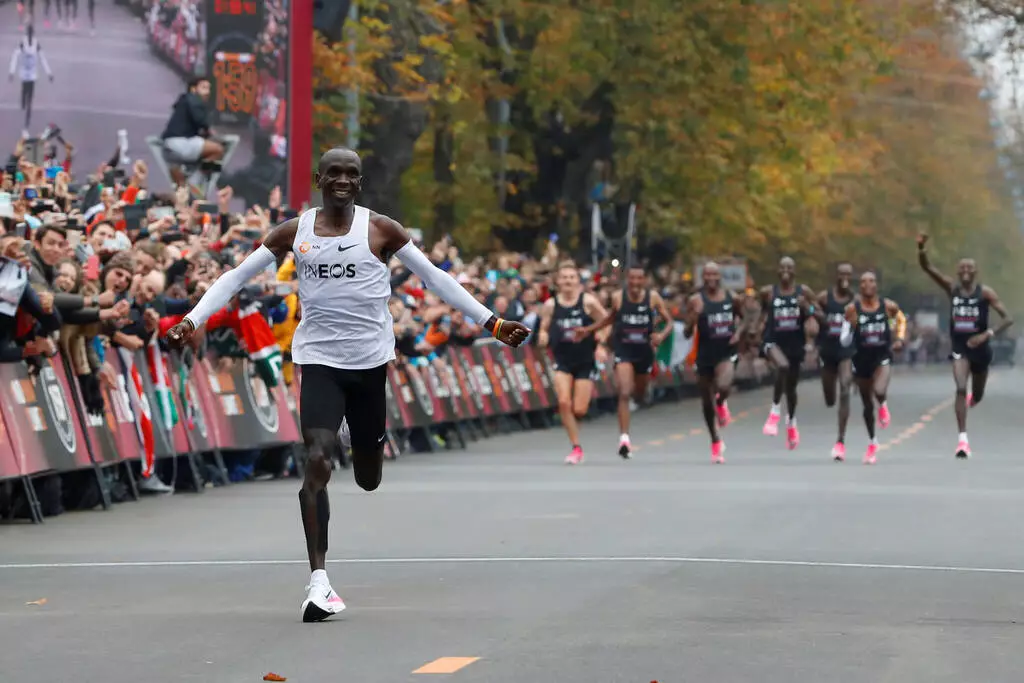
Written by: longermiles editor (On Feb 22, 2022).
A tempo run is an essential running exercise for any runner out there, especially for an elite runner. Elite runners apply longer tempo runs of up to 20 km in the workout to prepare for a championship. The concept of tempo run was conceptualized and analyzed from the running behaviors of Kenya’s elite runners like Lorna Kiplagat and Paul Tergat.
A 2019 study based on Deliberate Practice theory, published by the European Journal of Sport Science, compared the training schedules and running success of Kenyan vs. Spanish elite athletes. The study stresses the significance of tempo runs for Kenyan elite athletes. The study compares the kind and amount of practice (systemic training) undertaken by various long-distance athletes and their success. The result confirmed that the foundation of running for Kenyan runners who train on the hilly Rift Valley region in Kenya is cemented on majorly tempo runs. They tend to employ a tempo pace of up to 70 minutes per week.
You have probably come across the term tempo run as a beginner runner. Maybe you know the meaning, or maybe not. In some instances, you have been doing tempo runs unknowingly. So what is a tempo run?
A tempo run is a fast-paced workout. It is also referred to as Threshold run or Lactate-threshold (LT). In a nutshell, it is a moderate to high intensity running for 20 to 40 minutes or a distance of 5km to eight kilometers.
Why Tempo Run is important
While long-distance running relies on endurance, winning success is purely based on sustained speed over time. Running experts like Toby Tanser believe that tempo runs are crucial for enhancing speed over a race distance.
Tempo run helps build lactate threshold or the point whereby the body gets fatigued. Science explains LT as the stage where lactic builds up in muscles and starts to create soreness or burning sensation. It is the point you start having the idea of stopping because the legs are tired and burning.
However, going by the explanations given by running experts, LT is exciting physiology. They fathom that while the tempo runs increase LT, they can also reduce muscle strains, making running comfortable.
How do you reduce muscle strain?
As a runner pushes the Lactate-threshold higher, the muscles start to learn how to utilize the byproducts of burned oxygen, lactate, and hydrogen efficiently. It results in less muscle acidy, allowing the runner to sustain the fast pace. This is according to experts like Bill Pierce from Furman University, South Carolina,
Benefits of Tempo Runs
Tempo runs help develop the mental toughness and stamina required during racing. As you run moderately fast, the LT builds up, and that’s when you feel like the legs are tiring. However, as we have mentioned earlier, the muscles learn to utilize LT as you push harder. It is why tempo runs are regarded as the bread and butter of endurance. Once your muscles are used to such a level of strain over a while, your overall pace increases. Constant pushing needs mental toughness. It is one of the essential ingredients a runner should have to rack up miles.
How to Run Tempo Run

Usually, what tempo run does is to upset your comfort zone. You will run beyond the pace you’re used to. It involves exerting sufficient intensity at a suitable duration. That is, not too slow and too short. The period depends on the distance you intend to cover. Therefore, do high-intensity running over a significant running period.
For instance, a 5K runner should do a 20 minutes tempo run, translating to about 3 miles of running. A 10K runner should double up and do a straight-six or eight miles with a pace of 8 minutes-per-miles. The speed may be very uncomfortable but can be maintained if a runner remains focused.
A beginner is likely to miscalculate the pace. One of the easy techniques one can apply is running at a "comfortably challenging speed" (hard effort), whereby holding a conversation while running is not attainable, but it shouldn’t be overly tiring. Sustain the pace for up to three minutes. Then Rest for 60 seconds by jogging and repeat the tempo run at least five times. Walking as a recovery after the first tempo run attempt implies pushing too hard. Also, remember that running starts after warm-up.
Another way one can measure the pace is by making good use of your running sports watch. For example, maintain almost your optimum heart rate.
Adding pace to your current running speed is also an excellent way to develop a good tempo pace. Add between 30 seconds and 40 seconds to the speed if you’re a 5k runner and 15 to 20 seconds for a 10K runner.
Whichever method you may want to use, the goal is to run at the desired pace that considers how you feel during the run. The rule is to make it comfortably hard.
However, increasing LT from tempo runs is critical for marathoners
For a 10-K run, start with three miles of easy runs, then do two repeats of a 10-K pace for two miles or a 5-K speed for one mile. Have a one-mile recovery run between repeats. Then finalize with two miles of easy cool down for up to 10 minutes.
The world’s most successful marathoner Eliud Kipchoge has been propelled by tempo runs. In his interview with Olympic.com, Kipchoge highlighted his training session and tempo runs features predominantly.
Eliud Kipchoge’s Running Plan

(source: The New York Times)
Eliud Kipchoge’s running plan entails morning and afternoon training sessions and stretches from 5-6 days of the week.
- Several slow runs
- 30-40 KM run a week
- Core sessions
- Up to two-speed session
- Daily conditioning
- Daily strength session
As a runner, whether professional or armature, do tempo runs that support your training goals. The results will be improved pace and endurance.



